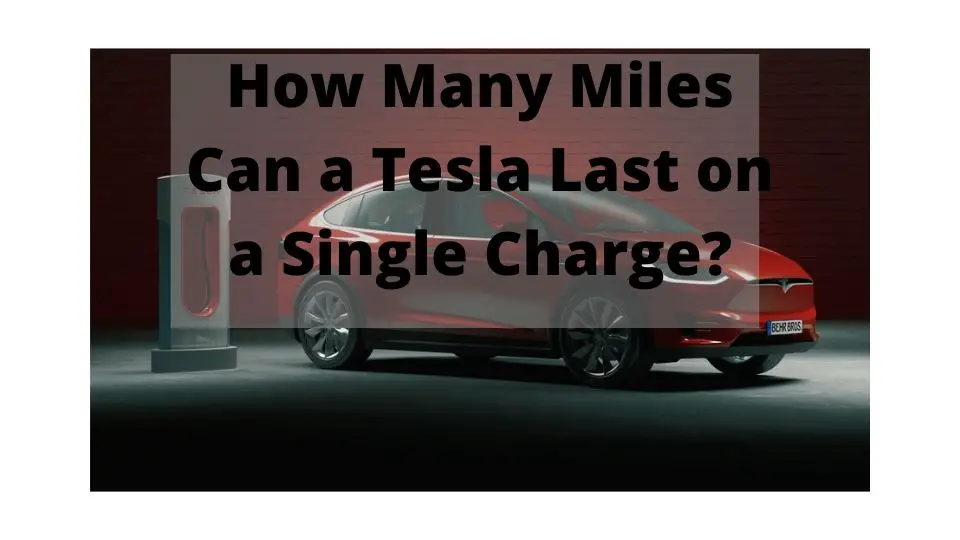When contemplating the world of electric vehicles (EVs), one of the foremost concerns for prospective buyers is the range of these innovative machines. Among them, Tesla stands as a frontrunner, enticing consumers with its impressive technological advancements and range capabilities. But just how far can a Tesla travel on a single charge? This article delves into the intriguing world of Tesla range, exploring the factors that influence it, model comparisons, real-world experiences, and the future of Tesla’s battery technology.
At the heart of Tesla’s appeal is its range. Various factors determine how many miles a Tesla can cover on one charge, including battery size, driving habits, terrain, and environmental conditions. Understanding these variables is crucial for any potential Tesla owner or enthusiast.
1. Battery Size and Capacity
One of the primary determinants of how far a Tesla can travel is the battery size. Tesla vehicles come equipped with lithium-ion batteries of varying capacities, measured in kilowatt-hours (kWh). For example, the Tesla Model 3 has battery options ranging from 54 kWh to 82 kWh, allowing for an estimated range of 263 to 353 miles, respectively. In contrast, the Model S, Tesla’s luxury sedan, offers a more robust battery, providing a range that can exceed 400 miles on a single charge.
The energy density of the battery also plays a vital role. Higher energy density means more power can be stored in a smaller battery, which is integral for maximizing range without compromising space or weight. Moreover, Tesla is constantly innovating, making strides towards developing even more efficient battery technologies which could significantly enhance range in future models.
2. Driving Habits and Style
The way one drives can dramatically affect the distance a Tesla can cover. Aggressive acceleration and high speeds can sap battery life more rapidly than steady driving. Tesla vehicles come equipped with various driving modes. Utilizing ‘Chill Mode’ can help mitigate range depletion, allowing for a more conservative and efficient driving experience.
Real-world studies have shown that drivers who maintain moderate speeds and practice acceleration gradually can achieve near the maximum range advertised by the manufacturer. Techniques like coasting and regenerative braking, which captures energy during deceleration, also contribute to extending the journey on a single charge.
3. Terrain and Weather Conditions
The influence of terrain on EV range cannot be understated. Hilly or mountainous regions can place an additional strain on battery life as the vehicles have to exert more effort to ascend grades. Conversely, driving downhill allows for the vehicle to harness regenerative braking, extending the range once more. Flat terrains generally permit the most efficient energy use.
Weather also significantly influences battery performance. Cold temperatures can reduce battery efficiency and range, with studies indicating the potential for a range drop of up to 40% in extreme cold. On the flip side, higher temperatures, while sometimes more forgiving, can also necessitate the use of air conditioning, further consuming energy and reducing range. Therefore, understanding how environmental conditions interact with vehicle operation is essential for maximizing electric mileage.
4. Charging Infrastructure
The Tesla Supercharger network is pivotal in alleviating range anxiety, allowing drivers to recharge their vehicles rapidly. These charging stations, strategically placed along major travel routes, can recharge a Tesla to about 80% in roughly 40 minutes, enabling long-distance travel without extensive downtime. Besides Superchargers, Tesla owners also have access to various home charging solutions, like the Wall Connector, which allows for overnight charging, ensuring that the vehicle starts the next day at or near full capacity.
5. Model Comparisons
Users often wonder how different Tesla models stack up against each other regarding range. The Model S, with its elegant design and high-end features, offers the longest range, making it ideal for long hauls. The Model 3, while slightly less capable, balances affordability with an impressive range suitable for most daily commutes. The Model X, Tesla’s SUV, compromises with a slightly shorter range due to its heavier build but compensates with spaciousness and versatility. Finally, the Model Y, akin to the Model 3 in technology but with added utility, presents a compelling option for families while still offering a commendable range.
6. The Emergence of New Technologies
Looking toward the future, Tesla is spearheading advancements in battery technology that promise to redefine the landscape of electric vehicle range. Innovations such as solid-state batteries and improvements in battery chemistry could result in significant increases in efficiency and driving range. Furthermore, Tesla’s ongoing investments in artificial intelligence and machine learning for their Autopilot feature may optimize energy consumption dynamically, enhancing range based on real-time data.
7. Conclusion
In summary, determining how far a Tesla can travel on a single charge is a multifaceted endeavor influenced by a myriad of factors such as battery size, driving style, terrain, and weather conditions. With ongoing advancements in battery technology and a robust charging infrastructure, the future looks promising for Tesla owners and electric vehicle enthusiasts alike. Understanding the nuances of electric range not only equips potential buyers with valuable insights but also enhances the overall driving experience. As more people shift toward sustainable transportation, the excitement around Tesla’s capabilities continues to grow, paving the way for a greener future.
